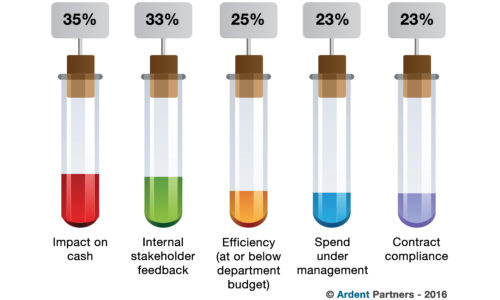Our ongoing Throwback Thursday series that looks at the 15 annual CPO/State of Procurement reports that I have written continues today with another look at CPO Rising 2016: The Art and Science of Procurement, a report published in June 2016. As with many of our works, this one served as the genesis and theme for a new organization to use as a lens to examine procurement. The idea behind the theme (and subtitle) of this year’s report was not to pose the question of whether procurement is an art or a science. Rather it is to examine how the unique elements of each field can and should be applied in the pursuit of procurement mastery.
Procurement is a blend of art and science, combining business, category, and supply expertise with leading technology, data analytics, and associated value-based decision support capabilities. (To be fair, the survey did asked the question and 94% of Chief Procurement Officers at the time agreed that procurement is a blend of both art and science.) Procurement is a science because it deals with process and application and it studies and tests its results; quantitative analysis and precision are valuable tools of the trade. Procurement is also an art because it involves the knowledge and insight from the humanities and the social and behavioral sciences; nuance and negotiation are critical to the craft.
Procurement Performance
The development of a Best-in-Class procurement operation is an achievement that can have a tremendous impact on overall operations and results. The ability to place roughly 90% of spend under management and manage that spend very well is no small feat. It is a laudable accomplishment and one that can take years to achieve. It also makes a financial impact. Ardent Partners research has found that for every new dollar that is placed under management of the procurement department, the average enterprise realizes a benefit of between 6% and 12% during the first contract cycle. But, beyond any one metric, Ardent Partners research has also shown that the pursuit of procurement excellence can pay extraordinary dividends and is a wholly worthwhile endeavor. This can be seen in the consistently sizable advantage that Best-in-Class departments possess across a number of key metrics.
Beyond Savings
For more than a decade, analysts at Ardent Partners have challenged the use of savings as the sole or primary measure of a procurement department’s (or CPO’s) performance because doing so can diminish or constrain the total value of what procurement contributes to an enterprise. In periods of deflation, savings can appear to be a convenient procurement metric, but there are simply too many factors beyond the control of a procurement team that ultimately determine final savings numbers for it to dominate the performance discussion. The good news is that in 2016, only 7% of procurement departments use savings as the sole measure of their performance. The list of other metrics used by the other 93% of enterprises is quite lengthy and the level of usage of each indicates that no real consensus yet exists as to what the other top metrics should be. But, that is fine because this industry works on a continuum. It has taken years for the industry to move to a more balanced approach to procurement performance; so, it may take a few more before the methodology is standardized.
Figure: Top Metrics (Besides Savings) to Measure Procurement Performance

After savings, there are many top metrics that are used to measure the procurement department’s overall performance . While there is no clear leader as to the second most important metric, procurement’s impact on cash (35%) and internal stakeholder feedback (33%) top this list. In 2012, Ardent Partners developed the CPO Scorecard™ to be used as a mechanism for CPOs to expand the performance discussion beyond savings and institute an industry-standard framework to better capture the nuances and complexities of procurement-driven value and results. Whether a CPO uses Ardent’s scorecard or some other approach, the metrics that are ultimately tracked should be linked to procurement activities that support the larger executive agenda and overall business objectives. If it does not matter to the leadership, it should not be a top priority for the CPO. What does matter is that the metrics are unambiguous, measurable, tied to a specific time-frame, and have clear accountability.
WATCH FOR A BIG ANNOUNCEMENT ON MONDAY
Tagged in: Ardent Partners Research, Chief Procurement Officer, Performance, Savings, Spend Under Management, Throwback Thursday









